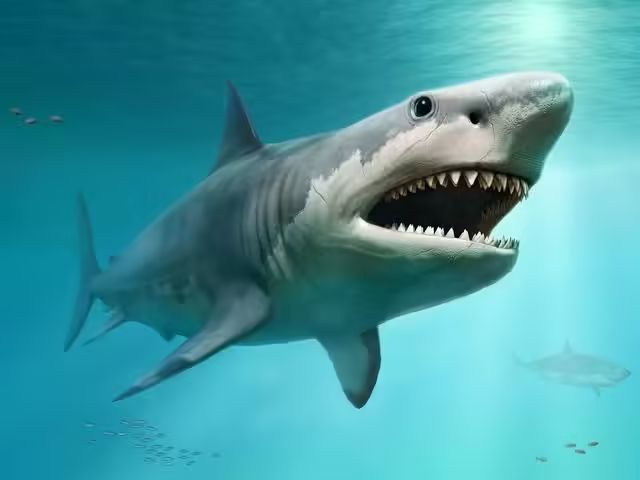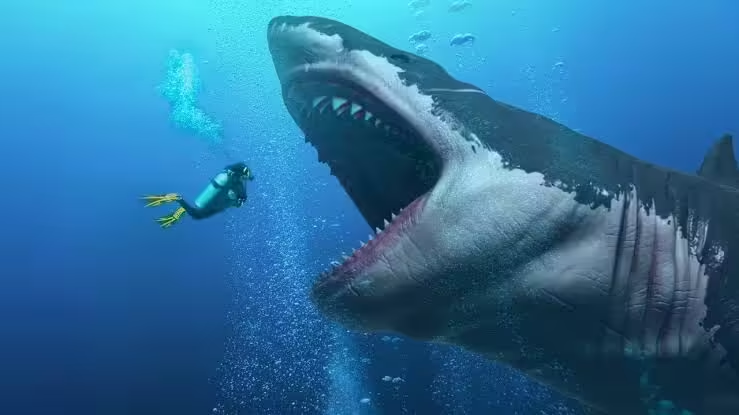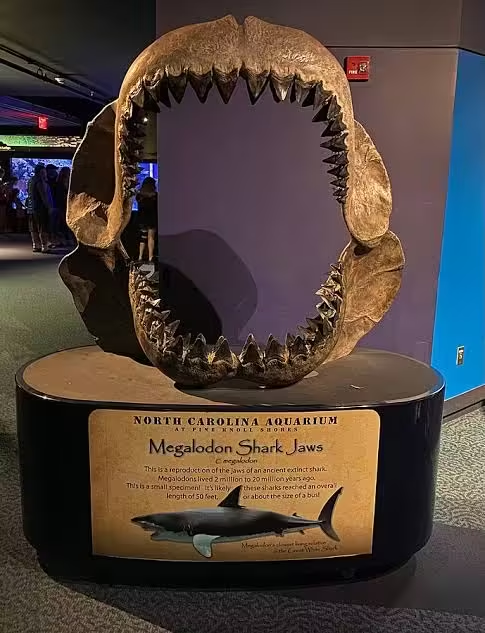Megalodon: The Last Top Predator of the Ancient Oceans
Table of Contents
Introduction
Imagine swimming in the ancient oceans and suddenly catch a glimpse of that massive shark that was ever recorded-the Megalodon. It is a prehistoric giant that ruled the oceans millions of years ago, which makes it the most infamous top predator. But how much do we really know about Megalodon, and why does it so profoundly awaken our imagination? This article delves deep into the world of Megalodon to explore its origins, its characteristics, and the mysteries surrounding its very existence and extinction.

Origin and Evolution
Ancestry and Evolutionary Timeline
The existence of megalodon has been traced as far back as 23 million to almost 3.6 million years through the Miocene and Pliocene epochs. This shark is believed to have had ancestors from older shark species, such as Carcharocles auriculatus, and thus traces almost over 60 million years. Along this journey in millions of years, it has evidenced significant adaptation that has led it to become this phenomenal predator we now discuss.

Environmental Factors Affecting Evolution
The evolutionary pressures on Megalodon were largely influenced by the warm, shallow seas characteristic of the Miocene. These waters were replete with large marine mammals, such as whales and seals, which were the primary prey for Megalodon. In addition to changing sea levels and climatic influences, these masses of water determined habitat conditions and prey availability, and thus must have been driving forces behind evolutionary change in these enormous sharks.
Physical Characteristics
Size and Length
Megalodon was a real giant; size estimates range between 60 feet or more in length. Such an animal would three times bigger than the current largest living great white sharks in existence. It had a massive body streamlined for a flow to a current speed that would catch far plenty of prey in swim hunting.

Teeth and Jaw Structure
Another feature that characterizes Megalodon is the size of the teeth. They reach up to seven inches in length and are serrated and triangular in shape, thus fully adapted to cutting into massive prey flesh. Megalodon possessed some of the most powerful jaws – or rather, the highest estimate of the bite force, ranging between 10.8 and 18.2 tons – thus the most powerful bite of any known animal.

Body Composition and Adaptations
Megalodon had a predatorial body. It had an elongated body type, massive pectoral and dorsal fins for stabilization purposes, and a great tail fin for swimming propension. These made it to be a fast-swimming and agile predator which easily catches and overpowers prey.
Habitat and Distribution
Geographic Range
Estimated from fossil evidence, Megalodon was a cosmopolitan species, whose fossils are found on all continents except Antarctica. The species inhabited warm coastal waters, especially areas where marine mammals were plentiful.
Preferred Habitats
Megalodon favored temperate to tropical shallow waters with adequate prey. Shores, continental shelves, and offshore environments presented excellent hunting opportunities, for which Megalodon formed the apex in a marine food chain.

Diet and Hunting Methodologies
Major Prey
The diet of Megalodon, the giant fish in question, was composed mainly of huge marine mammals such as whales, dolphins, and seals. There is also a piece of evidence that it feeds on other sharks as well as giant fish. High concentrations of all these large marine animals in the Miocene oceans made it possible for such a huge fish like Megalodon to feed on it.
Hunting Strategies and Methods
Being an apex predator, Megalodon had several hunting strategies. Probably, it was using the ambush strategy in which it remained under or behind the prey before expediting into a quick and powerful attack. Its great, serrated teeth, sharp enough to extend deep fatal wounds, were likely to target the heart or lungs of its victim. Probably it relied more on size and strength to ram and incapacitate larger prey.

Behavior and Social Structure
Social Behavior
Although much about Megalodon’s behavior is still quite speculative, there are some pieces of evidence, which could attribute the fact that it might have been a solitary hunter. Still, as in modern sharks, very likely, Megalodon must have congregated at the places where food sources were plentiful or at a mating season.
One of the apex predators, megalodon was one of few species that threatened its existence in the ocean. It had a lifestyle that impacted other marine species’ behavior and distribution thereby modifying the architecture of old marine ecosystems.

Life Cycle
Reproduction and Lifespan
Reproductive Cycle
Megalodons had no record of specific reproductive cycles. The only clue is that their characters bear similarity to other benthic sharks, but researchers believe that it lays eggs and gave birth to live young. This cycle seems unchanged through generations.
Megalodon was an ovoviviparous, meaning it gave birth to live young. The females might have given birth to their pups in nursery areas, generally safe environments, with a lot of food and few predators. Nursery areas were fundamental for the young Megalodons’ survival as they needed time to start their self-sustaining lifestyle.
Growth and Development Stages
These pups were born relatively large, estimated to be around 6 and 10 feet. They reached adult size within a few decades. This was quite necessary for them since their environment was full of competition and predators.

Evidence of Fossils and Discoveries
Major Fossil Sites
Key fossil sites are located in North America, South America, Europe, Africa, and Asia. Of special interest are the finds at Calvert Cliffs, Maryland, and the Bone Valley Formation in Florida, where there are hundreds of Megalodon teeth and vertebrae, which give crucial knowledge about the species.
Important Fossil Findings
Of the most exciting finds are the large Megalodon teeth, which even surpasses up to seven inches. The sizes of which can be matched in different places as evidence of the vaster territory it covered. Besides that, finding vertebral columns and other skeletons have managed to recreate inferences of Megalodon size and anatomy.
Scientific Methods of Study
Techniques Used in Paleontology
Paleontologists used a number of techniques to examine Megalodon fossils, such as comparative anatomy, isotope analysis, and computer modeling, to estimate the size of the shark, the growth patterns and its dietary habits.

Advancements in Technology Used in Analyzing Megalodon
With advanced technology, 3D scanning, and imaging are changing the face of the study concerning fossils of the famous Megalodon. These technologies will allow for the reconstruction and simulation in finer detail regarding the life and environment of this ancient predator.
Extinction Theories
Climate Change and Environmental Changes
One of the more renowned theories is that climate change and cooling ocean temperatures that occurred in the Pliocene era led to the extinction of the Megalodon. Such changes could have deprived the species of prey and created changing habitats that would make survival for a species as large as the Megalodon that much more challenging.
Competition and Predation
Another hypothesis could be that the beginning of competitors from other emerging predators, such as the ancestors of modern great white sharks, may have also led to the decline of Megalodon. Changes in the abundance and distribution of prey may have also affected Megalodon’s survival.
Human Role(if any)
Even though such great creatures as humans did not have a chance to exist at that time, there could be much acquired from this knowledge as why Megalodon is extinct, so it would definitely be an exemplary contribution to modern conservation efforts. The fact of such a strong predator’s extinction testifies to the fragility of marine ecosystems and to what drastic changes can interfere with them.

Megalodon in Pop Culture
Media and Movie Appearances
The public has also fallen in love with megalodon, furthered through films, documentaries, and books. Movies such as “The Meg” and several shark documentaries have brought megalodon into people’s imaginations, where it is seen to some extent as a monstrous myth.
END
Popular culture also has helped perpetuate myths and misconceptions of Megalodon. For example, some have believed that Megalodon exists today within the deeper ocean currents, although this is undoubtedly proven otherwise by scientific discovery. Those existing myths, although creative and exciting, are without fossil evidence and scientific truth.

Comparison with Living Sharks
Dis-parities and Similarity to Modern Sharks
Comparisons between Megealodon and modern great white sharks even show similarities and differences. While they share common ancestry with similar adaptations for the hunt, no modern species can compare to Megealodon for size and power. Those differences have told researchers a lot about the forces of evolution and the ecological niches filled by large marine predators.
Lessons from Megalodon in Modern Marine Biology
The study on Megalodon’s existence and extinction would serve as lessons for modern marine biology and conservation. Understanding what has allowed Megalodon to thrive through the ages and what had caused its extinction can inform efforts towards the protection of current marine ecosystems from similar threats.
Lessons in Conservation from Megalodon
Importance of Marine Conservation
The story of Megalodon also underlines the importance of marine conservation. Marine habitat preservation and maintaining marine ecosystem balance is very essential in the survival of today’s species, most of which face threats from climate change, overfishing, and pollution.

Insights from Megalodon’s Extinction
The extinction of Megalodon reminds one of possible consequences brought about by environmental changes. Through the studies of extinct species, a better understanding and prediction of what’s going on with the environments currently and in the future will help improve the efforts mitigating such threats to preserve marine biodiversity.
Future of Megalodon Research
Possible Discoveries and Questions Answered
And despite best of research efforts, much of Megalodon still remains a mystery. Such discoveries as more nearly complete fossil specimens may only open other aspects of biology and behavior of Megalodon. Further investigation of fossil sites and progress in technology hint exciting times ahead for any research of Megalodon.

New Technologies in Fossil Research
Newer technologies, including DNA analysis and more advanced imaging procedures, may unlock new knowledge on the genetic makeup, growth patterns, and interaction of Megalodon with the environment. That would give better understanding about the ancient predator.
Conclusion
Megalodon, in a way, is one superb apex predator that lives with scientists and the world at large in their imagination. These reasons alone are more than enough to make it a worthwhile subject of study. Learning about Megalodon’s past and the features and criteria that enabled dominance in past times would only help deepen understanding of marine ecosystems and, most importantly, conservation issues. Every now and then, as we learn more about this ancient giant, Megalodon’s legacy is bound to shape our worldviews about the natural world.
FAQs
How big is the largest Megalodon tooth ever found?
The largest known Megalodon tooth measures 7.48 inches long. These enormous teeth give a notion of how large this early shark was and what force it could have posed to the marine life of the age.
How fast could a Megalodon swim?
Estimates have it that the Megalodon was swimming at a speed of up to 11 miles per hour or 18 kilometers per hour. With its swift swim speed and strong powerful bite, it was quite an effective predator.
Do living descendants of Megalodon exist today?
No living descendants exist today. Although there are no living descendants, their modern sharks that exist today share a common ancestor with the Megalodon.
What was the place of Megalodon within its ecosystem?
Megalodon was a top predator that served as a primary driver of marine ecosystems equilibrium by controlling large marine mammals and other prey species.
Can Megalodon survive in the contemporary ocean?
Taking into account the extreme changes of environments and the loss of large prey species, it is highly unlikely that Megalodon can survive in modern oceans. A strong evidence of current science represents that it became extinct approximately 3.6 million years ago.




